Munich, one of Europe’s most popular tourist destinations, is a place of contrasts: a big city and also a province, a metropolis but with a distinct village feel, and a design and high-tech heartland but also renowned for its traditional workshops.
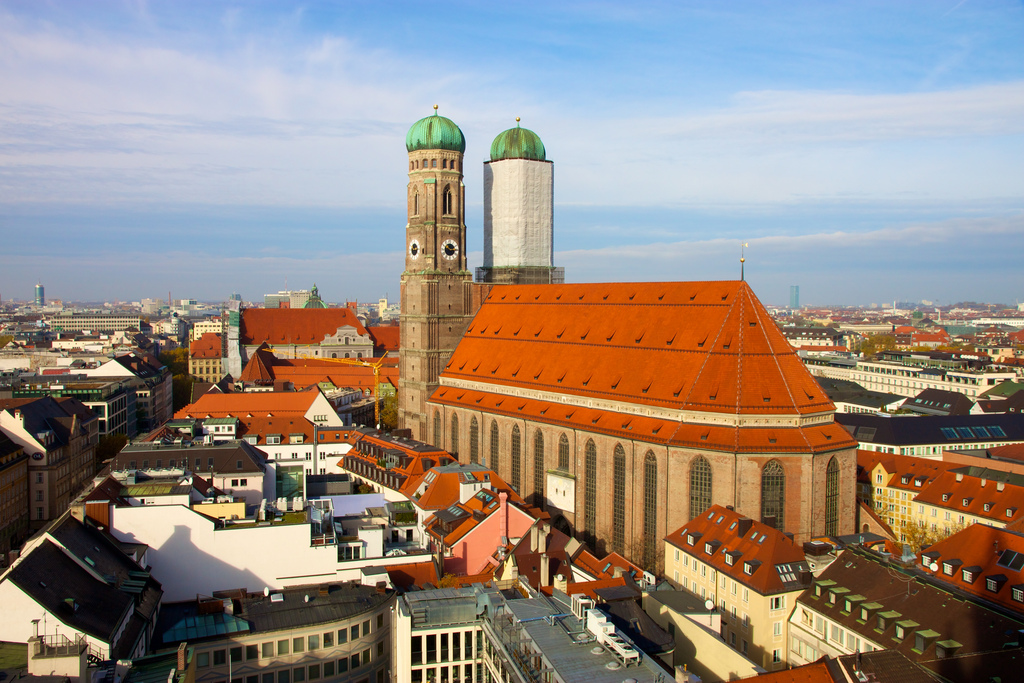
Munich’s Frauenkirche (Photo: Jiuguang Wang via Flickr / CC BY-SA 2.0)
In a nutshell, Munich is a cosmopolitan city with a big heart, full of art, culture and joie de vivre. Of course, the latter is best demonstrated each year at the iconic Oktoberfest, but there is so much more to this fabulous city.
Aside from the alcohol-fuelled revelry, there is a diverse selection of ways to enjoy Munich at any time of the year, which are unique to the city. Here is a selection of experiences that best encapsulate Munich at its best, including at museums, iconic sights, local businesses, and on guided tours.
See the Rathaus-Glockenspiel in action at Marienplatz
Every day at 11am and noon (and again at 5pm in summer), like clockwork, the Town Hall’s glockenspiel chimes into life. The Marienplatz square is often packed with people who have come to see the re-enactment of two stories using bells and large moving figurines. The show is divided into two parts, a story of Duke Wilhelm V’s marriage to Renata of Lorraine, and the Schäfflertanz cooper’s dance. The merry medley of bells and 16th-century reminiscence is a joyful window to the city’s past. Marienplatz itself is the focal point of the city with whimsical statues, neo-Gothic architecture and the Christkindlmarkt Bavarian market in the winter.
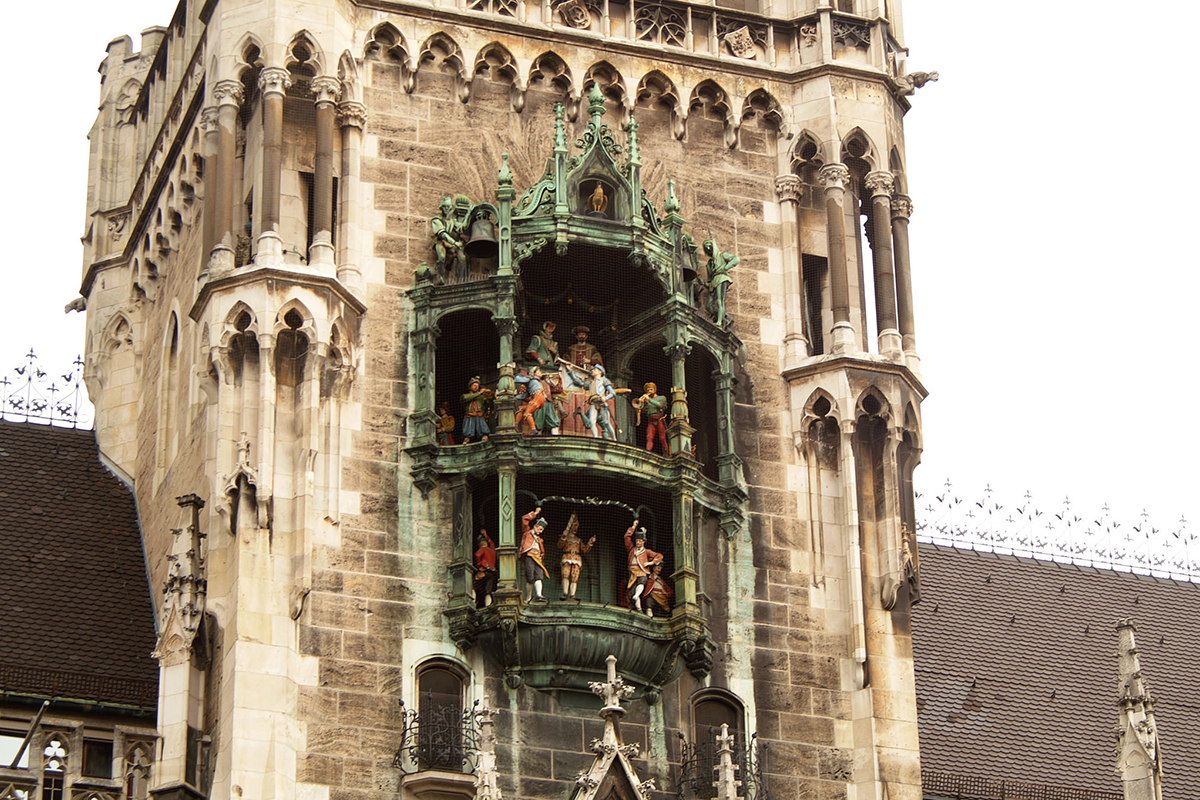
The Rathaus-Glockenspiel (Photo: Tony Fernandez via Flickr / CC BY-NC 2.0)
Learn about the city’s Third Reich history on a walking tour
Before Hitler became the leader of Germany and was revealed to be the monster he’s known as today, he was the leader of a fledgling party called the Nazis, who opened their first headquarters in Munich. There are many important buildings remaining in the city that trace the party’s ignominious rise and fall, including Hitler’s former apartment, the Gestapo headquarters, and now, a Memorial to the Victims of Nazism. The best way to get a good overview of this era of history in relation to Munich is on a guided walking tour. For an overview of the Third Reich walking tour options available, check out the list on Viator here.
Try rich truffles and cheeses at Dallmayr Delicatessen
Stopping off for a “nice bit of a cake” is one of the pleasures of city sightseeing, and in Munich there are no shortages of traditional tea houses in which to do so. But few can match the sheer kaleidoscopic variety on offer at Dallmayr Delicatessen. Germany’s most famous delicatessen, Dallmayr offers an incredible variety of sweets, cakes and other goodies, as well as a magnificent deli and gourmet food and drink departments, a first-class restaurant, café bistro and champagne bar.
Dienerstraße 14-15
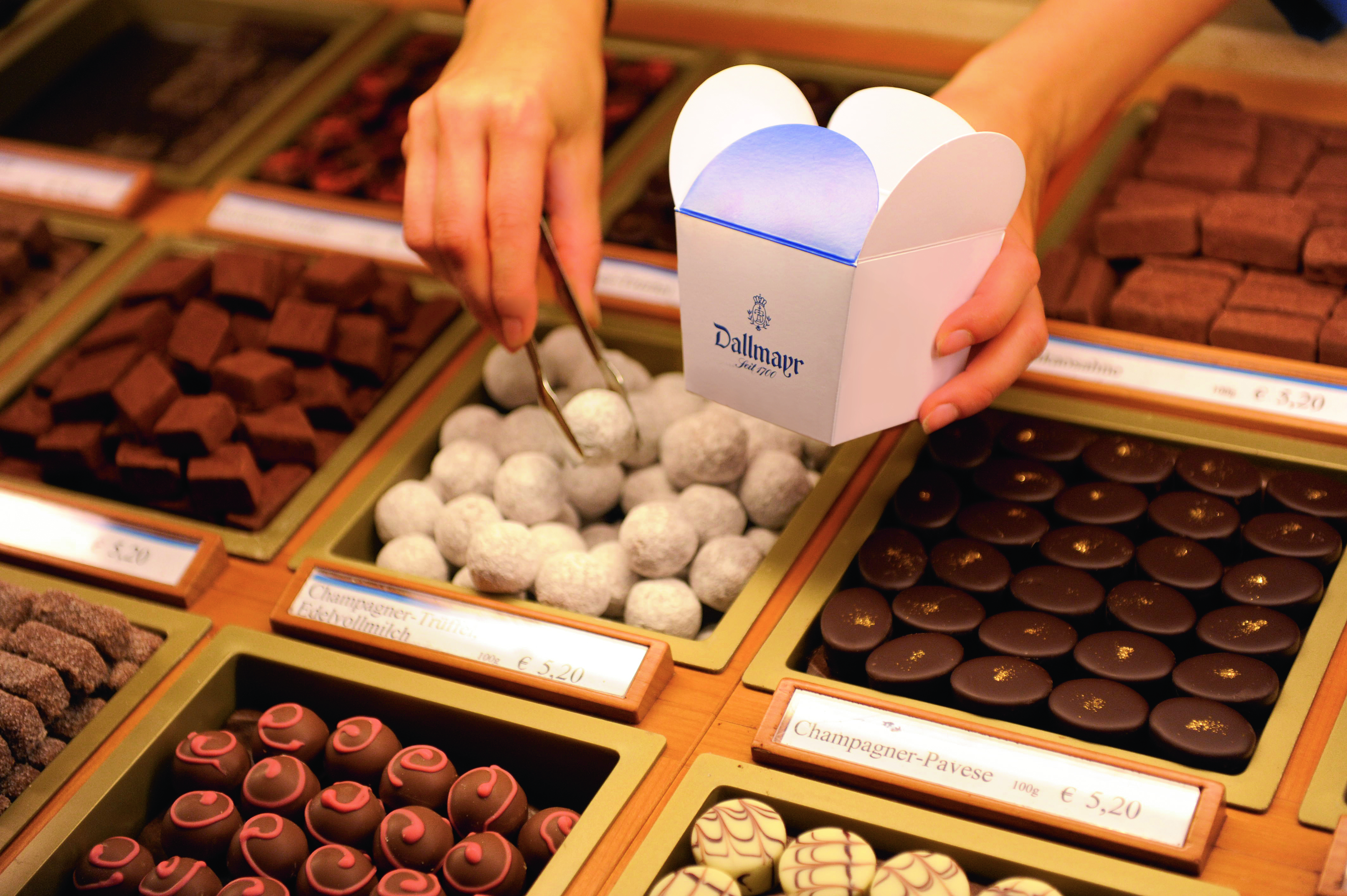
A mouth-watering selection of truffles at Dallmayr Delicatessen (Photo: Dallmayr Delicatessen)
Take a personalised tour of the region
With over 35 years’ experience in Munich and Bavaria, there is no-one better placed to show you around the region than John B. Wetstone. His company, Johns Bavarian Tours, offers personalised trips that are tailored to your specific wishes, with John himself serving as driver, guide and translator. Each guest is offered red carpet door-to-door service, and as you aren’t part of a large group, but on your own privately guided tour, you can enjoy the freedom to see and do what you want at your own pace. As well as classic landmarks and attractions, John’s tours also take you off the beaten track to explore some of Bavaria’s hidden gems.

John B. Wetstone in central Munich alongside one of his tour buses (Photo: Johns Bavarian Tours Munich)
Get lost exploring the Englischer Garten
Starting close to the city centre by the Haus der Kunst and stretching out to the edge of the city is a thick wedge of green landscaped gardens, lakes and waterways. The English Garden is one of the world’s largest and finest urban parks, designed by the pre-Independence American Sir Benjamin Thompson in 1789, who employed a style similar to the great British landscape artists of the time. Further development has endowed the park with a Japanese teahouse, an open air theatre and a range of monuments. The northern section of the park, known as the Hirschau, is decidedly more rural in feel, so don’t be surprised to see flocks of sheep grazing by the footpaths.
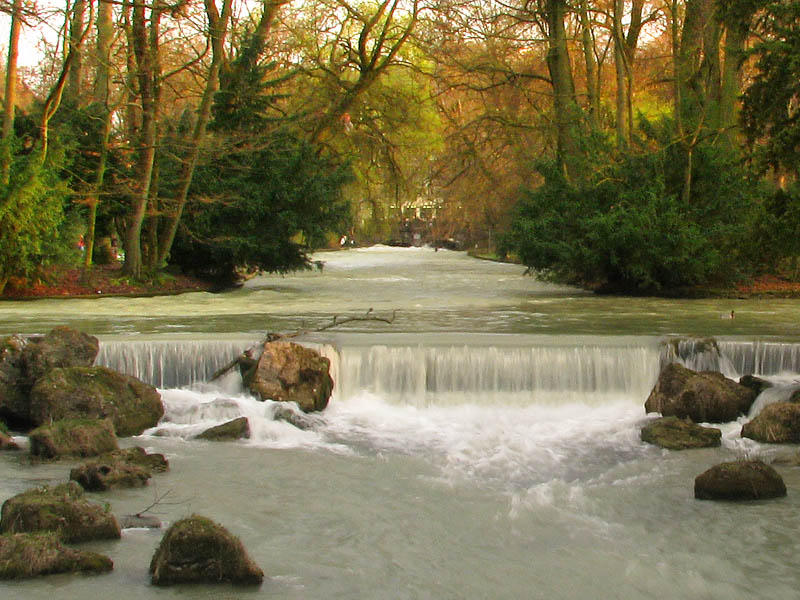
The peaceful English Garden (Photo: Storm Crypt via Flickr / CC BY-NC-ND 2.0)
Embrace the suds at the Beer and Oktoberfest Museum
In a city that produces about 56 million bottles’ worth of beer each year, it is only fitting for there to be a museum dedicated to the amber nectar. Of course, Munich is equally famous for its beer festival, Oktoberfest, and this museum serves to celebrate and honour both the city’s history as a purveyor of beer and as host to one of the world’s most famous festivals. Come here for a true education and learn about the role migration had on beer production in Munich, as well as the monasteries, the purity law, and the unique quality of Munich’s beer. There’s also an array of Oktoberfest memorabilia to enjoy.
There are also some excellent beer tours to be had around the city. To browse the options available on Viator, please click here.
Sterneckerstraße 2
Have some food with a view at Ella Restaurant
Ella is the only restaurant offering a view of the magnificent classical architecture of Königsplatz square while one dines. This veritable viewing platform showcases some of Europe’s finest 18th-century architectural craftwork. But when it comes to food, Ella doesn’t fall short either, meaning you can come and enjoy the superb vistas and depart with a satisfied stomach too. It is highly unlikely that you will get a good table however without an advance reservation.
Luisenstraße 33

The windowside tables at Ella Restaurant (Photo: Ella Restaurant)
Discover technological achievements at Deutsches Museum
A temple of technological achievement, the Deutches Museum celebrates the ingenuity of humankind down the years, showcasing the fruits of man-made endeavours such as sailing ships, work with atoms, windmills, space probes, diesel locomotives, industrial robots, organs, lifeboats, and much more. As you wander through the museum, machines hum, lightning flashes through the air and telescopes zoom in on star formations, offering an enthralling experience for the 1.3 million visitors who descend on this museum each year.
Museumsinsel 1
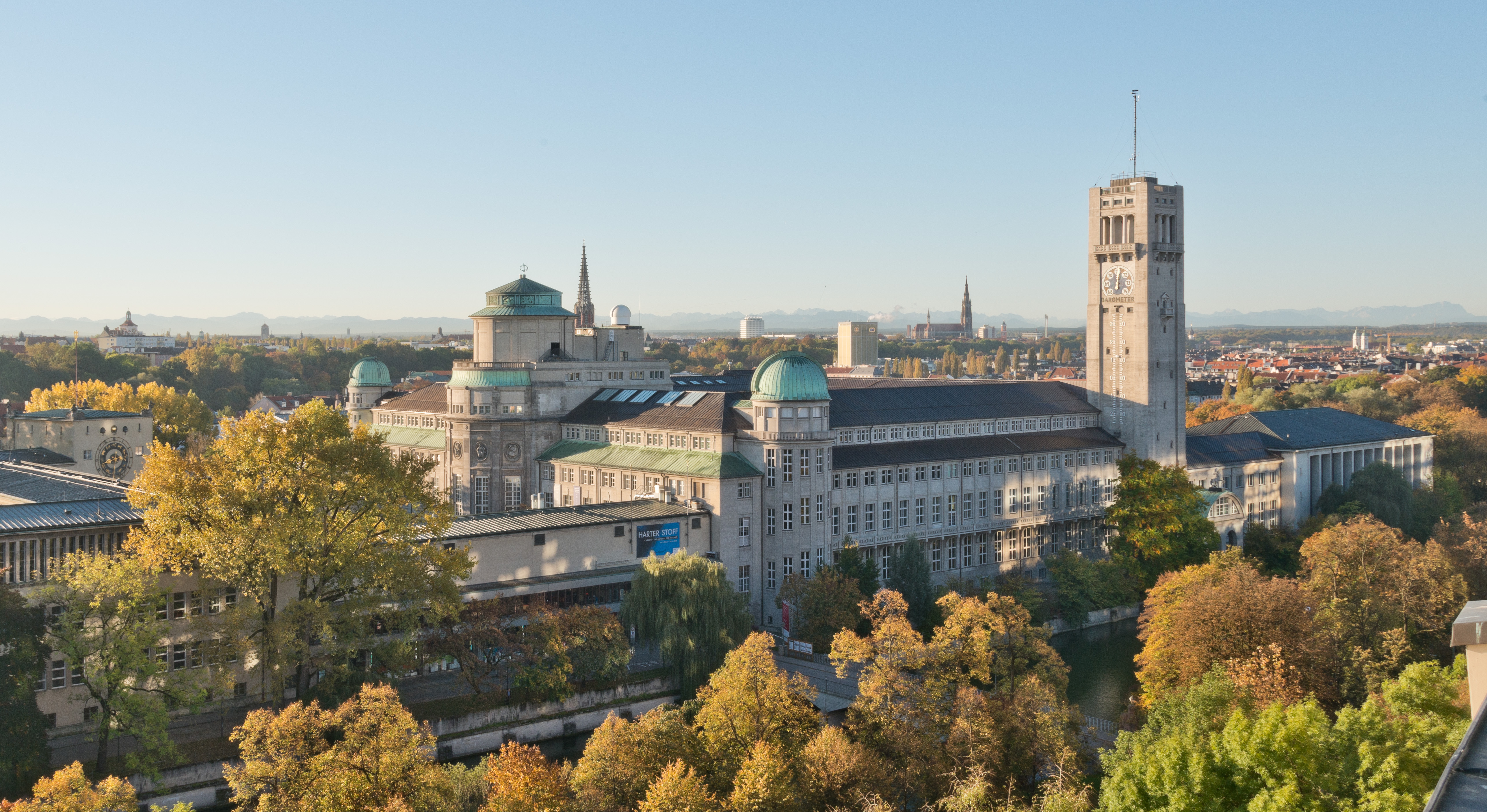
The imposing exterior of the Deutsches Museum (Photo: Deutsches Museum)
Catch a movie at Filmtheater Sendlinger Tor
Combining tradition and modernity, the Sendlinger Tor movie theatre is not your typical cinema. Boasting neoclassical pillars, chandeliers and a dramatic balcony, the theatre oozes historical atmosphere and grandeur. But don’t be fooled, as when it comes to films, Sendlinger Tor is firmly rooted in the present, with Hollywood blockbusters, critically acclaimed indies and domestic films shown throughout the week.
Sendlinger-Tor-Platz 11
Observe contemporary art at Haus der Kunst
The diverse history of contemporary art is celebrated and explored at this exceptional museum. Having gone through more transformations than David Bowie over the years (including a foray into classical modernism) it has remained a significant cultural landmark, regardless of where its focus lies, and continues to attract art lovers from far and wide. As well as the array of art on display, the museum also hosts fellowships, visiting artists, curators, scholars and seminars, ensuring that whenever you visit, there’s certain to be something going on.
Prinzregentenstraße 1
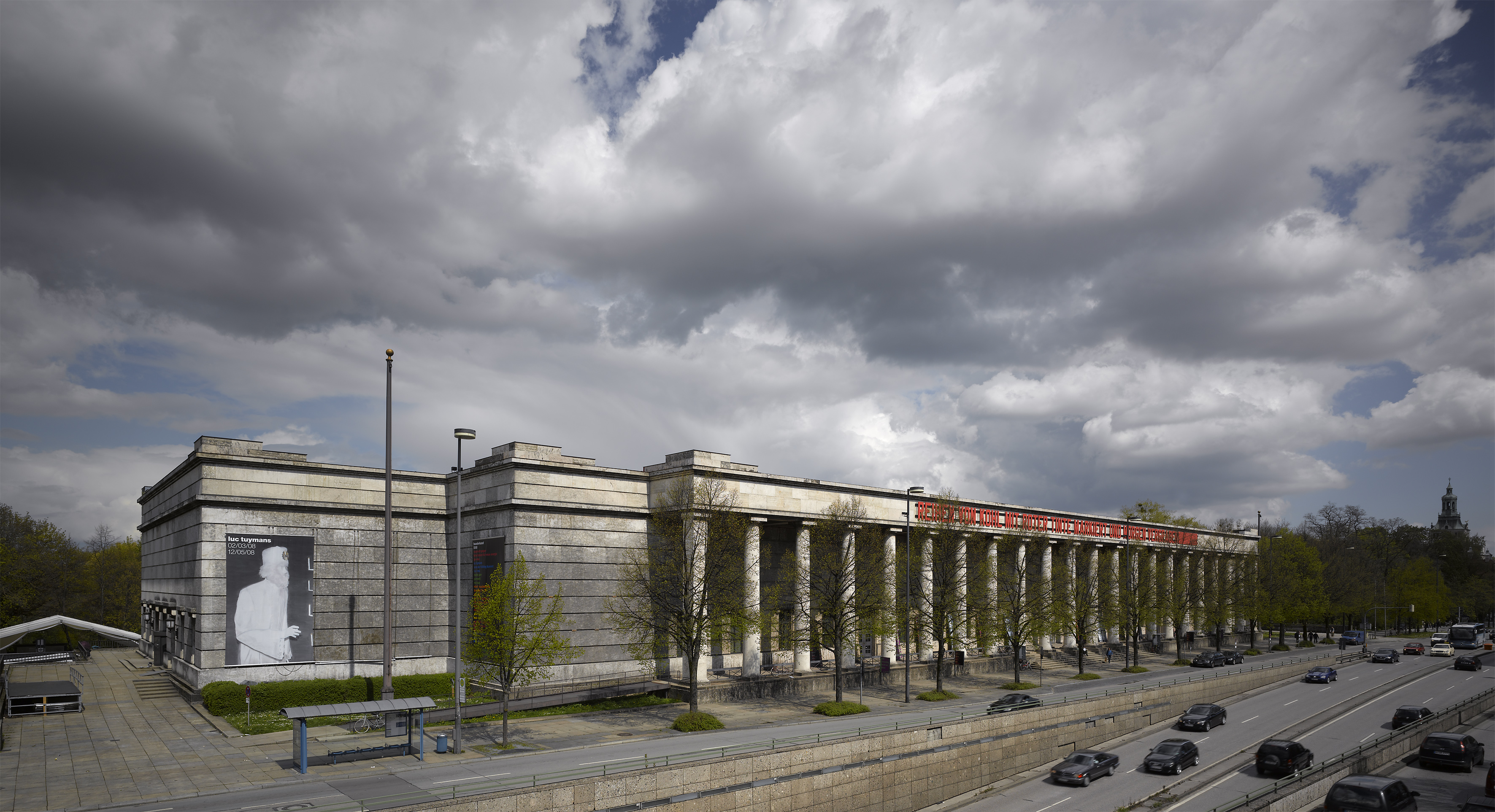
Another dramatic building exterior, this time the Haus der Kunst (Photo: Haus der Kunst)
Contemplate changes in hunting at Das Jagd-und Fischereimuseum
Located in a former Augustinian church in the heart of Munich, the German Hunting and Fishing Museum offers an intriguing insight into the age-old practices that were once integral to human survival. Interactive elements, taxidermy, paintings, trophies, rifles and many other exhibits demonstrate the skill and precision required, as well as the impact these activities have had on the environment and culture down the years.
Neuhauser Str. 2, 80331 München, Germany

The beautiful Das Jagd-und Fischereimuseum (Photo: Simon Richard via Flickr / CC BY-ND 2.0)
Attend performances at the Tollwood Festivals
For three weeks each summer, Munich’s Olympia-Park becomes a township of tents and stages, with culinary delicacies from all over the world on offer, and where international musicians and cabaret artists perform. Numerous tents devoted to musical acts, circus shows and stage plays pull in large audiences, with spectators able to watch the majority of the performances free of charge. There are numerous stalls selling craft items, jewellery and bric-a-brac from all over the globe. During the Christmas period, another Tollwood Festival takes place, this time on the Theresienwiese, the same site that hosts Munich’s famous Oktoberfest.
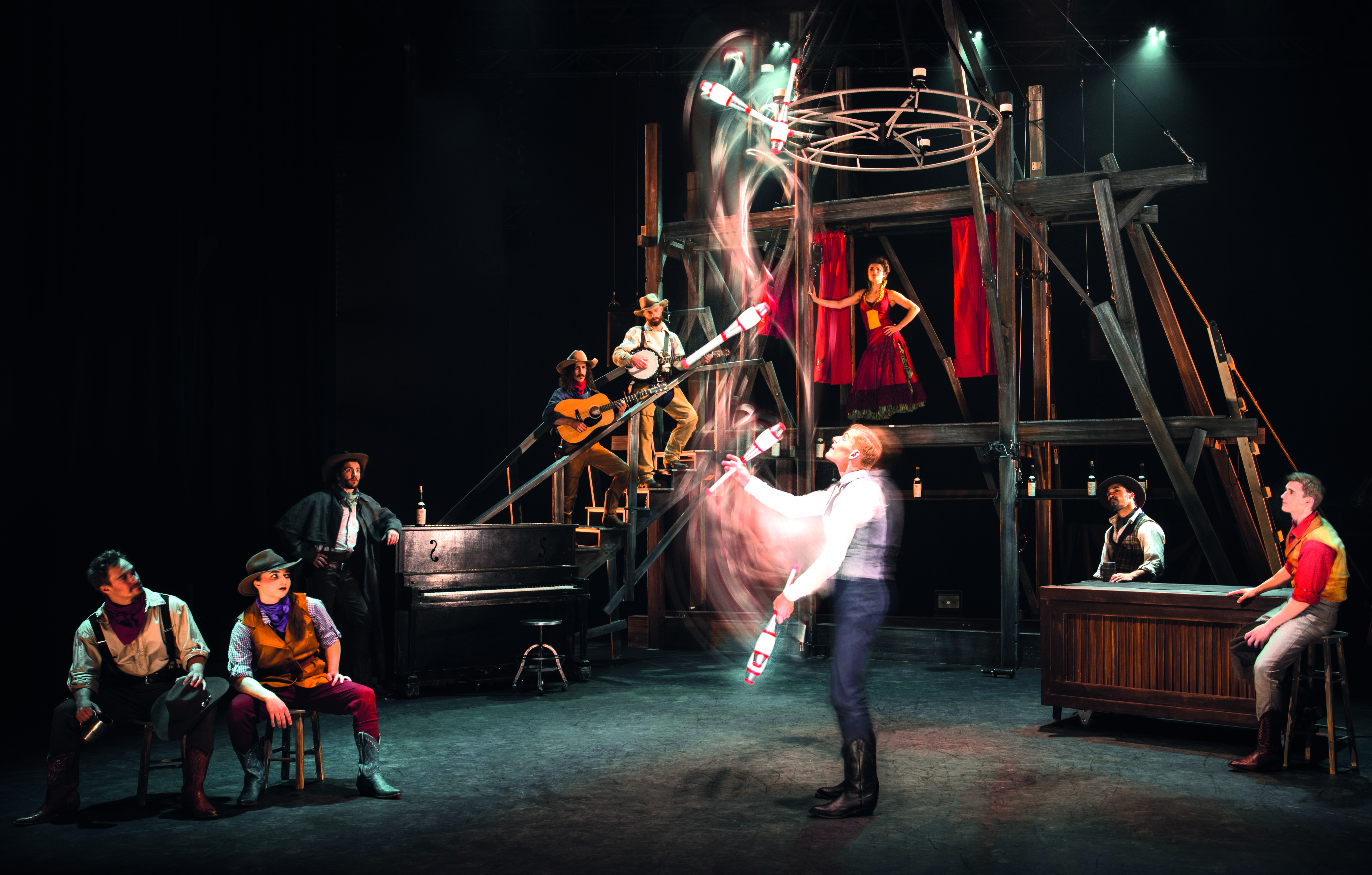
A performance by CirqueEloize at Tollwood Festival (Photo: Jim_Mneymneh)
Visit the huge beer garden of Königlicher Hirschgarten
No visit to Munich is complete without enjoying a relaxed, food and drink-fuelled afternoon in one of its world renowned beer gardens. Named after the recreational park Hirschgarten, it has an eye-popping 8,000 seats under gigantic chestnut trees, making it officially the world’s largest beer garden. A deer park directly next door (‘Hirsch’ is deer in German) adds to the ambience, while patrons are invited to wash their own beer mugs – a tradition that would shock some people in other parts of the world, but in Munich is all part of the experience.
Hirschgarten 1
Shop for cutting edge design at Weißglut concept store
Munich is known as one of the design capitals of the world and nothing exemplifies this reputation more than the Weißglut Design concept store. Situated in the northern borough of Schwabing, the store began as a platform for young designers to showcase their products and has grown into one of the city’s finest destinations for cutting edge design across fashion, jewellery, home accessories and more, offering a true alternative to the homogeneity of the High Street retail landscape.
Hohenzollernstraße 8